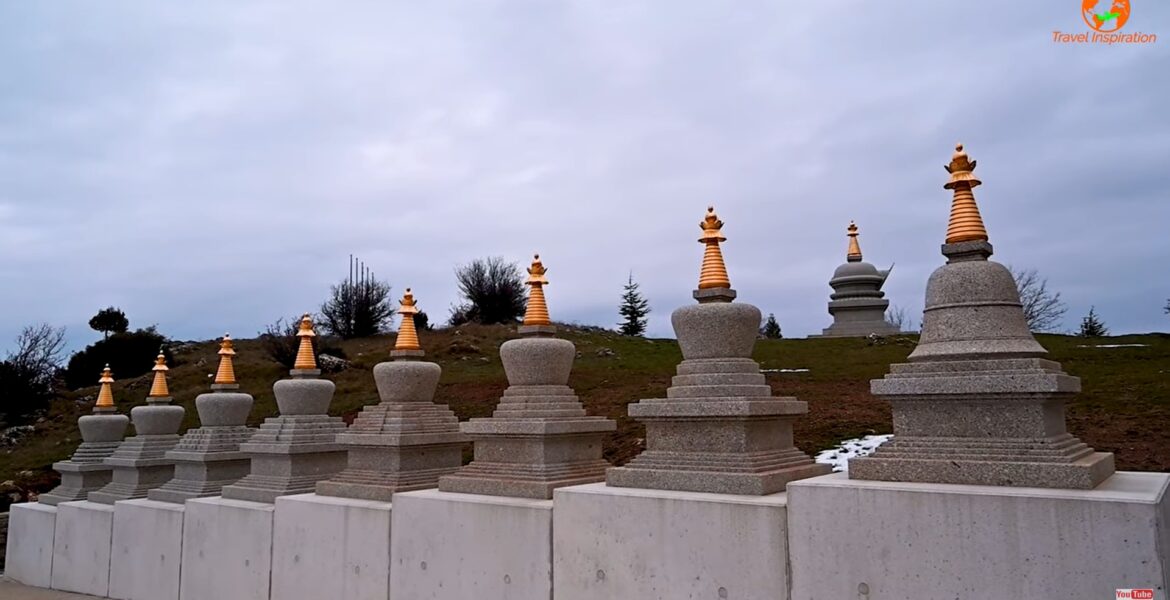On the slopes of Mavros Oros, with an incredible view of the Gulf of Corinth, there is a place that gives you the feeling that you are somewhere in Tibet. The reason is the "Karma Berchen Ling Meditation Retreat Center", one of four Buddhist centres of the Diamond Road organisation in Greece.
The meditation centre belongs to the "Diamond Path Buddhist Foundation", a lay non-monastic organisation of the Karma Kagyu lineage, which is one of the four major schools of Tibetan Buddhism and focuses on meditation and through interaction with a skilled teacher can lead in the full and direct experience of the nature of the spirit, as travel-inspiration.gr writes.
But what does the term Stupa generally mean in Buddhism?
It is a mound-like architectural structure that has a corridor around it and contains relics, small Buddhist statuettes as well as the ashes of cremated monks. Its main body is in the form of a bell, which symbolises the complete wisdom of the Buddha and is used as a place for contemplation prayer. In fact, these constructions, according to Buddhism, inspire man to deal with the development of the spirit and its unlimited possibilities.
See the video:
In the manicured open space where the Buddhist centre is located, there are eight different types of Stupas:
- The Lotus Stupa, which symbolises the birth of the Buddha.
- The Stupa of Enlightenment or Overcoming All Obstacles, representing the withdrawal of the last veils of the Buddha's spirit the night before he attained enlightenment.
- The Stupa of Wisdom or Sixteen Gates refers to the Buddha's teachings on the Four Noble Truths.
- The Stupa of Miracles.
- The Stupa of the Descent from the Tushita Paradise has many steps where the Buddha gave teachings to his mother.
- The Stupa of Reconciliation or Unity was built to celebrate the Buddha's reconciliation with his cousin Devadatta after some difficulties were caused.
- The Stupa of Complete Victory, which symbolises the extension of the life of the Buddha by three months at the request of his disciples, and finally
- The Parinirvana Stupa symbolises the passing of the Buddha into Parinirvana, i.e. the nirvana that occurs after the death of the body of someone who has achieved nirvana during his lifetime.
These typical altars have a wonderful white colour and a golden top finish; at first glance, they look the same. But if one looks at them better, one will understand that their common elements are found mainly in the foundations up to the throne of lions, the upper part from the rings, and beyond because their middle part is what determines the diversity of each Stupa.
In the space, as the main monument dominates the ninth type of Stupa, the Kalachakra as it is called, which is associated with deep teachings about space and time, "The Wheel of Time", and is one of the highest methods for spiritual evolution and the liberation of man.
Despite the fact that the meditation centre is only for members of the Diamond Road and is not widely known to the public, it attracts dozens of ordinary visitors from all over the country, both for the "experience of the different" and for the wonderful location with the absolute tranquillity which offers.
READ MORE: Agia Fotini of Mantinea: One of the most mysterious churches in the world.

